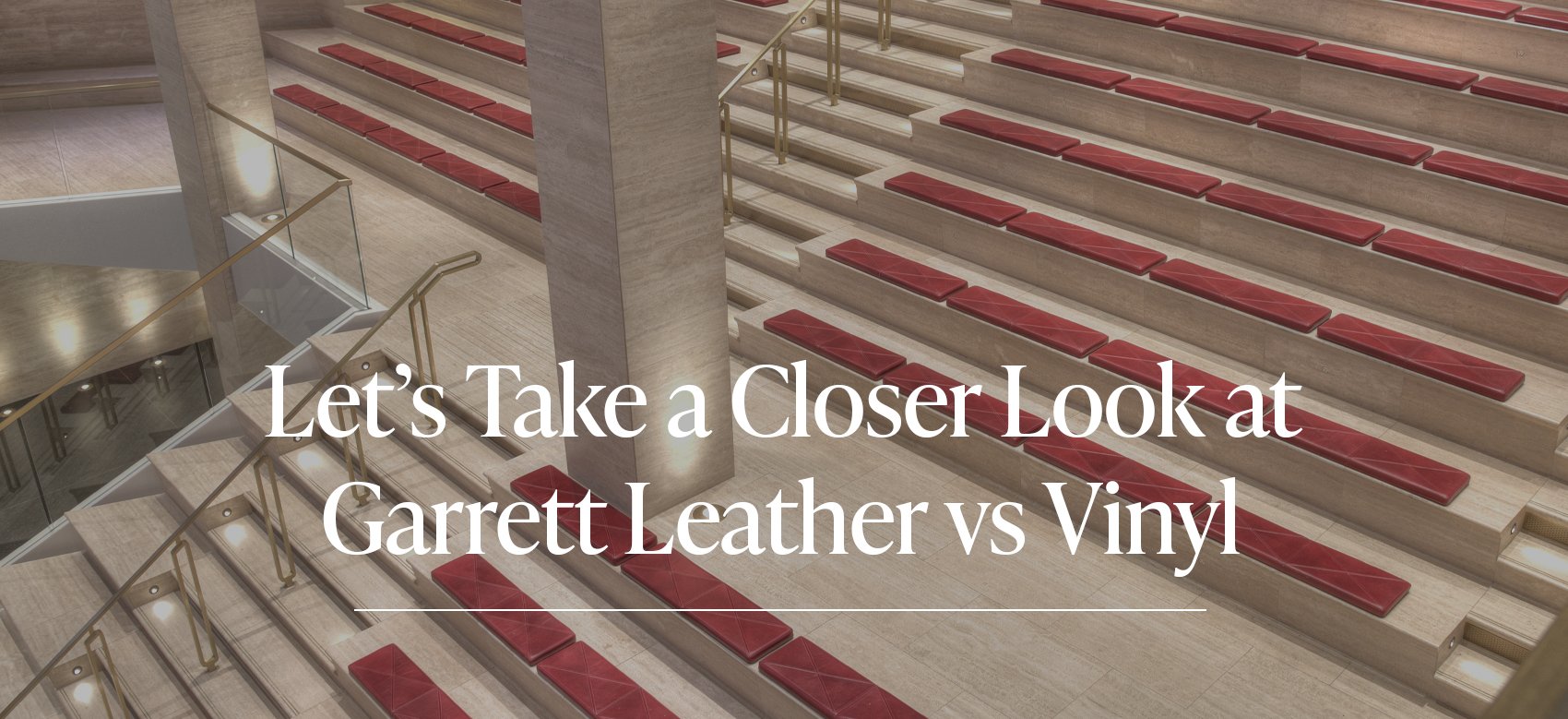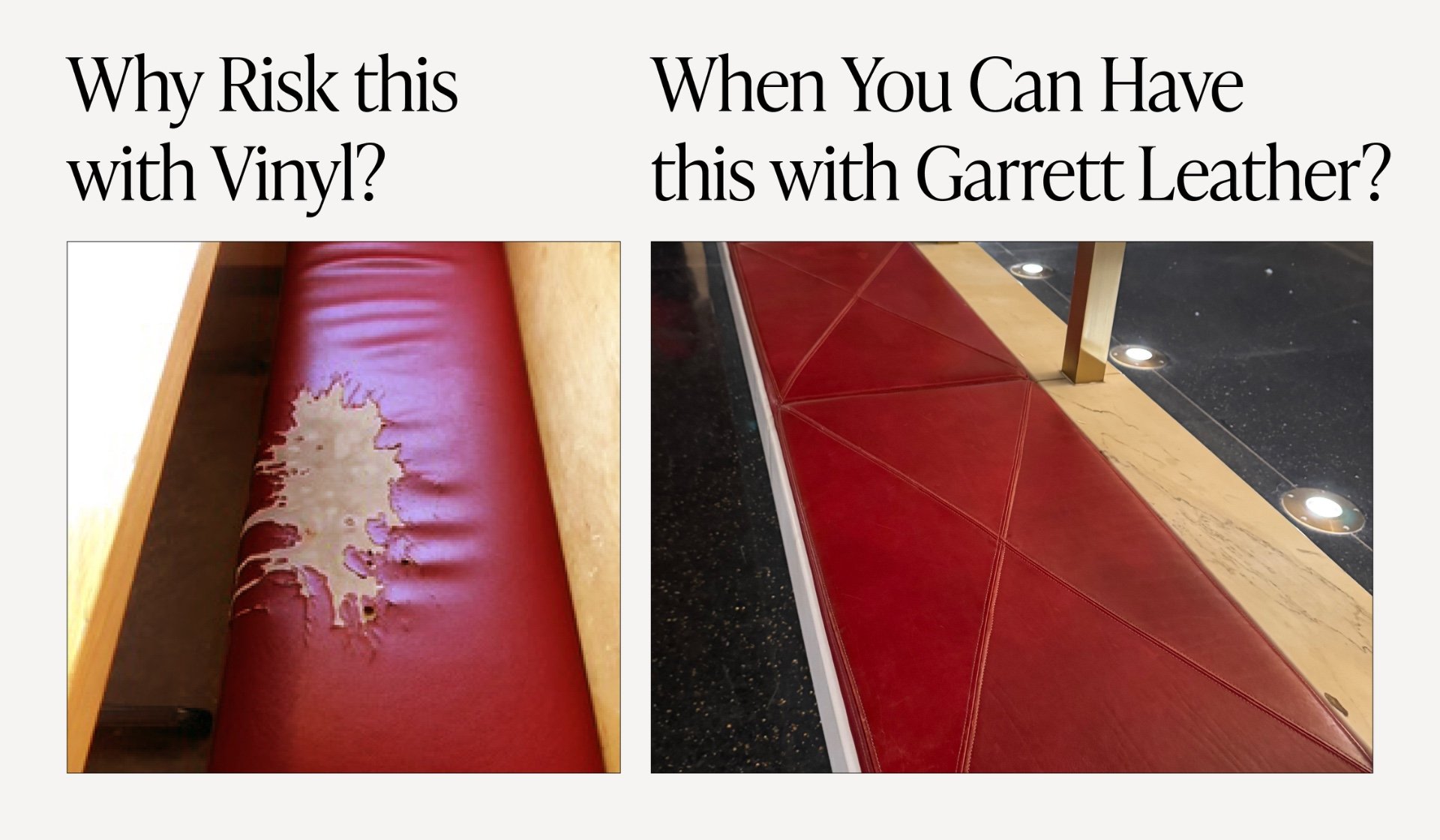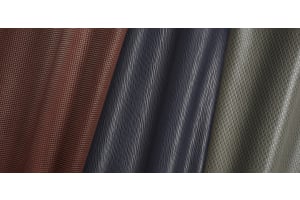Ask the Experts: Is Vinyl a Substitute for Leather?


| KEY FEATURES | VINYL | LEATHER |
| APPEARANCE | Vinyl is fabric that often has an artificial grain print to mimic the look of leather, but often lacks depth. |
Garrett leather is premium material that looks beautiful from the moment it is installed. Our leather’s rich color is from aniline dyes that penetrate all fibers of the hide. We have a wide variety of colors and textures depending on the type of leather you choose. |
| COMFORT | Vinyl is non-porous and does not adjust to body temperature. It often becomes sticky with prolonged exposure to body heat. | Leather is a porous organic material that allows it to “breathe”. Leather adjusts to body temperature for optimal comfort. |
| DURABILITY | Vinyl is uniform in weave, therefore, does not offer as much flexibility, strength or durability as natural leather. |
Leather consists of an intricate structure of collagen fibers that are intertwined in a way that provides exceptional flexibility, strength and durability that cannot be duplicated with any man-made product.
Many of our leathers offer superior durability for high traffic areas and pass stringent testing for water resistance, antibacterial properties and UV fading. |
| LONGEVITY | Vinyl often gets stiffer and may crack and peel with extended use. A rich patina will not develop with vinyl. | Our leather tends to become softer and more pliable, improving with age. Pure aniline leathers develop a rich patina with use. |
| SUSTAINABILITY |
Vinyl is formed from the chemical compound polyvinyl chloride, also known as PVC. Many “vegan leathers” have been shown to have plastic-based materials derived from fossil fuels that will not biodegrade as well as natural leather. |
Leather is a natural, renewable resource and one of the oldest forms of recycling. Leather tanning drastically reduces waste and greenhouse emissions by keeping hides out of landfills. Tanneries preserve hides and craft them into beautiful, durable coverings that lasts for years. |
| ANTI-CRUELTY | Replacing leather with vinyl does not save any animals. |
Leather is a byproduct of the meat industry. Cattle are raised for their meat, not their hides. The hides that are used to make leather represent a very small percentage, around 3%, of overall value to the farmer. Ending leather production will not stop cattle production for the meat and dairy industries. If leather production stopped, it would create a huge problem with greenhouse gas emissions, estimated at 6.6 million tons per year - that would be cruel to the environment. |
| COST / VALUE | Vinyl may be priced lower upfront, but requires frequent replacements which increases costs over time. |
Leather is a high value investment that is made to last up to 5 times longer than fabrics. Leather improves with age, saving time and reducing additional waste. |
Have a leather topic you would like us to address as part of our “Ask The Experts” series?
Send your questions to [email protected].








